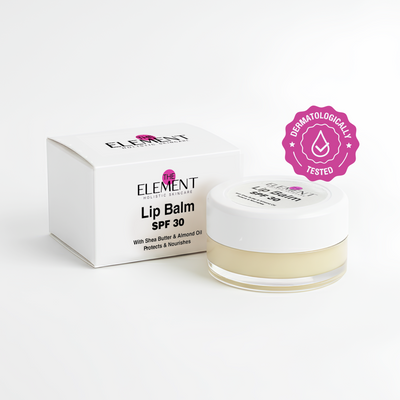What is Oxybenzone: Safety, Risks, and What You Need to Know

Introduction: Oxybenzone and Sunscreen Safety
Oxybenzone is one of the most widely used chemical ingredients in sunscreens, designed for daily, lifelong application to protect against harmful UV rays. However, growing research and regulatory scrutiny have raised significant concerns about its safety for both human health and the environment. This article provides an in-depth look at oxybenzone, summarizing the latest findings, regulatory actions, and expert recommendations to help you make informed choices about sun protection.
Oxybenzone: What Is It and Why Is It Used?
Oxybenzone (benzophenone-3) is a chemical UV filter that absorbs and dissipates ultraviolet radiation, helping to prevent sunburn and skin damage. It is commonly found in a wide range of sunscreens and personal care products due to its effectiveness and ease of formulation.
What to look for on the label
Benzophenone
Ingredients containing the word benzophenone (for example benzophenone-2)
BP# (for example BP2)
Oxybenzone
Sulisobenzone
Sulisobenzone sodium
Regulatory Review: Oxybenzone Under the Microscope
In 2021, the U.S. Food and Drug Administration (FDA) reviewed 16 sunscreen ingredients. Oxybenzone, along with 11 other chemical filters, was not granted GRASE status due to insufficient safety data. Despite this, oxybenzone remains permitted in U.S. sunscreens until the FDA finalizes its proposal.
The FDA has called for more research on oxybenzone, especially since studies show it is readily absorbed through the skin and can be detected in blood, urine, and even breast milk. The European Commission has gone further, proposing a strict concentration limit of 2.2% for oxybenzone in sunscreens, compared to the U.S. limit of 6%, citing safety concerns. In India the percentage tends to go higher than this.
Health Risks of Oxybenzone: What the Research Shows
Oxybenzone is considered the most concerning sunscreen ingredient by many health experts and organizations, including the Environmental Working Group (EWG). Key findings include:
- Systemic Absorption: Oxybenzone is easily absorbed through the skin, with studies showing it can be detected in the body weeks after use.
- Hormone Disruption: Research indicates that oxybenzone can act as an endocrine disruptor, potentially interfering with hormone levels. As a hormone disruptor it affects estrogen production particularly in women and testosterone production in men. At least one study showed oxybenzone exposure lead to lower testosterone levels in adolescent boys, as well as thyroid problems in both men and women.
- Reproductive and Developmental Effects: A 2017 review of 23 studies found associations between oxybenzone exposure and negative reproductive outcomes, including birth outcomes. A team of researchers at the State University of New York and the National Institutes of Health found a link between a concentration of benzophenones (the categorization to which oxybenzone belongs) and poorer reproductive success in men. The same study found that oxybenzone exposure increased women’s risk of other reproductive diseases, like endometriosis.
- Cancer Concerns: Animal studies have shown possible links between oxybenzone exposure and increased risk of certain cancers, such as thyroid tumors and uterine enlargement.
- Allergic Reactions: Oxybenzone can cause allergic skin reactions, particularly in sensitive individuals and children.
According to the Center for Disease Control (CDC), 97 percent of Americans have this chemical circulating in their bodies.
Environmental Impact: Oxybenzone and Aquatic Life
Oxybenzone is not only a human health concern but also an environmental hazard. It has been detected in oceans and waterways, where it can harm coral reefs and aquatic organisms. Some countries and U.S. states have banned sunscreens containing oxybenzone to protect marine ecosystems.
Oxybenzone in Comparison: How Does It Stack Up?
Compared to mineral sunscreen ingredients like zinc oxide and titanium dioxide, oxybenzone poses more significant health and environmental risks. The FDA and EWG both recommend mineral sunscreens as safer alternatives, especially for children, pregnant women, and those with sensitive skin.
Regulatory Actions and Recommendations
- United States: Oxybenzone is still allowed in sunscreens up to 6%, but the FDA is seeking more safety data.
- Europe: The European Commission has proposed a much lower limit of 2.2% due to safety concerns.
- Bans: Several countries and U.S. states have banned oxybenzone-containing sunscreens to protect coral reefs.
Conclusion: Should You Use Sunscreens with Oxybenzone?
While oxybenzone is effective at blocking UV rays, the potential health and environmental risks have led many experts to recommend caution. Opting for Oxybenzone free sunscreens is a safer choice for most people, especially those concerned about hormone disruption, allergies, or environmental impact.
FAQ
Q: What is oxybenzone?
A: Oxybenzone is a chemical UV filter considered toxic used in many sunscreens to absorb harmful ultraviolet rays.
Q: Is oxybenzone safe?
A: Current research raises concerns about hormone disruption, allergic reactions, and environmental harm. Regulatory agencies are calling for more safety data.
Q: How can I avoid oxybenzone?
A: Choose mineral sunscreens with zinc oxide or titanium dioxide, and check product labels for ingredients.
Q: Why is oxybenzone banned in some places?
A:Oxybenzone raises concerns about hormone disruption, allergic reactions, and environmental harm. Regulatory agencies are calling for more safety data. Oxybenzone can harm coral reefs and aquatic life, leading to bans in certain countries and U.S. states.
Q: What are the best alternatives to oxybenzone?
A: Mineral sunscreens with zinc oxide or titanium dioxide are the safest and most effective alternatives.



